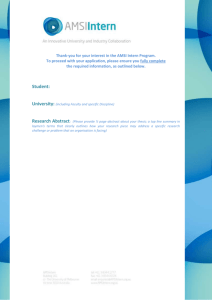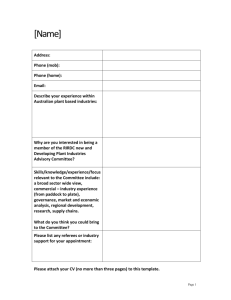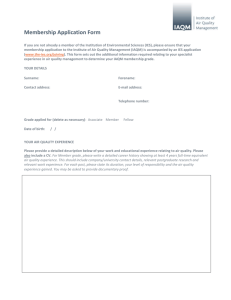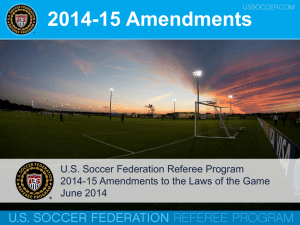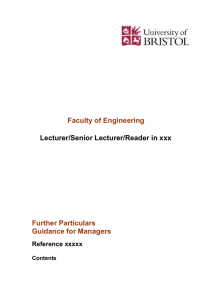Referee and Reference Guidance
advertisement
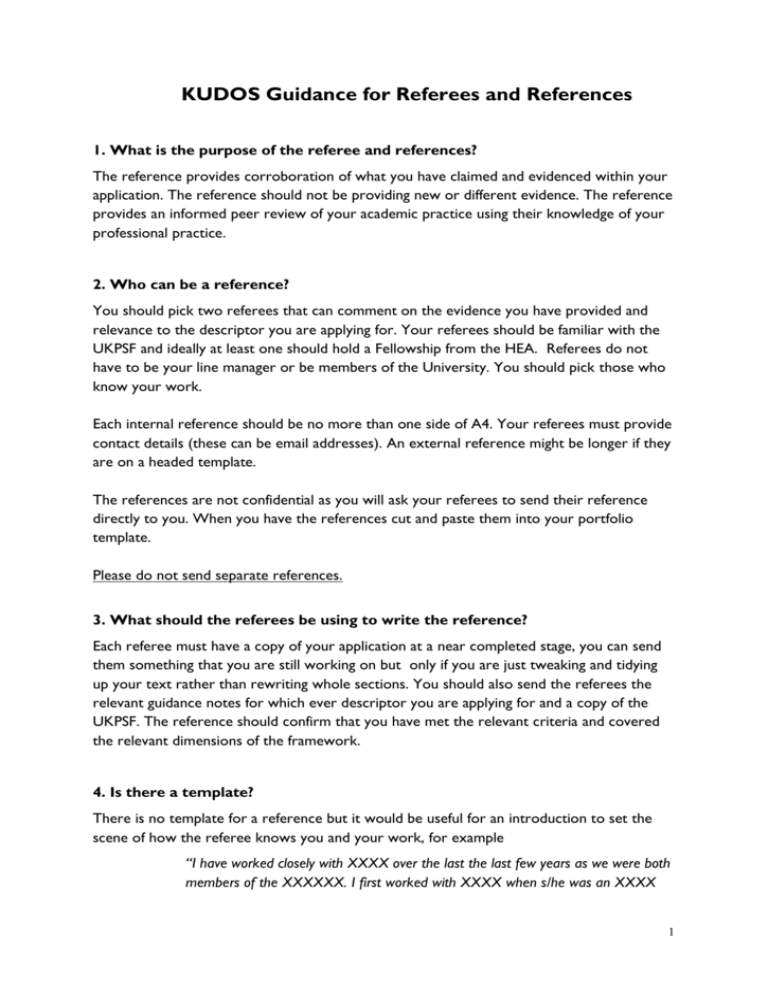
KUDOS Guidance for Referees and References 1. What is the purpose of the referee and references? The reference provides corroboration of what you have claimed and evidenced within your application. The reference should not be providing new or different evidence. The reference provides an informed peer review of your academic practice using their knowledge of your professional practice. 2. Who can be a reference? You should pick two referees that can comment on the evidence you have provided and relevance to the descriptor you are applying for. Your referees should be familiar with the UKPSF and ideally at least one should hold a Fellowship from the HEA. Referees do not have to be your line manager or be members of the University. You should pick those who know your work. Each internal reference should be no more than one side of A4. Your referees must provide contact details (these can be email addresses). An external reference might be longer if they are on a headed template. The references are not confidential as you will ask your referees to send their reference directly to you. When you have the references cut and paste them into your portfolio template. Please do not send separate references. 3. What should the referees be using to write the reference? Each referee must have a copy of your application at a near completed stage, you can send them something that you are still working on but only if you are just tweaking and tidying up your text rather than rewriting whole sections. You should also send the referees the relevant guidance notes for which ever descriptor you are applying for and a copy of the UKPSF. The reference should confirm that you have met the relevant criteria and covered the relevant dimensions of the framework. 4. Is there a template? There is no template for a reference but it would be useful for an introduction to set the scene of how the referee knows you and your work, for example “I have worked closely with XXXX over the last the last few years as we were both members of the XXXXXX. I first worked with XXXX when s/he was an XXXX 1 who came into a large level 4 module that all students studying XXXXX had to take. XXXX impressed me at this time with his/her enthusiasm and clarity in demonstrating to students how personal development planning was an important part of learning.” The reference there needs to be comment on the different aspects of the application. For example for D3 senior fellowship the application consists of a Reflective Account of Professional Practice (RAPP) and two case studies, the content of these should be acknowledge, for example, “S/he is an enabler who is highly respected by XXXXX colleagues alike. This is highlighted in particular in her/his second case study and by the short pieces of evidence within her/his reflective account of her/his academic practice. XXXX’s approach to her/his work is based on professional values that are wholly aligned to the UKPSF and founded on her/his own experience of XXXXX. S/he has always taken her/his practical experiences into how s/he can improve student learning by working with colleagues in XXXXX areas. In her/his RAPP and case studies s/he has provided evidence of all the dimensions of the UKPSF mapping them into her/his narrative. XXXXX has always been aware and used a mentoring approach to enable others to gain insights into and improve their own academic practice.” The reference needs to focus on teaching and/or supporting learning. It is useful if the referee can add some element that shows that they know your work, “I have been privileged to see her/him in action as I have team taught with her/him on both XXXXXX and on short ‘xxxxxx’ CPD courses. I know that XXXX will always be able to enthuse participants and show them just how they could enhance their teaching and their students learning. The HEA expects all the dimensions of the UKPFS to underpin your practice therefore it is useful for referees to provide examples of where and how this underpinning is presented in your account. For example dimension A5 and in all descriptors there is the following criterion - Successful engagement, where appropriate, in professional development activity related to teaching, learning and assessment responsibilities. It is useful for a referee to make comments against the different criteria such as this, S/he has always looked at developing her/his own skills for the good of others. A classic example is developing her/his understanding of XXXXXXX that has now led her/him to be the XXXX expert in this area on which reflects in her/his first case study. XXXXX’s work has been recognised within the university both in terms of awards and also as someone who is requested to be a contributor to institutional policy and practice. XXXXX has written papers and influenced policy in relation XXXXX. Her/his suggestions are always based on sound inclusive pedagogic principles and curriculum design. 2 It is useful for a final statement to confirm that your referee agrees that you have met the dimensions and relevant criteria, “XXXXXX most definitely meets the criteria of A/F/SFHEA and in particular criterion …(e.g. for SFHEA a key aspect is the support, co-ordination and mentoring of other’s, whether individual or a team, academic practice). I have no hesitation in recommending XXXXX for A/F/Senior Fellowship of the HEA. If you require further information then please do not hesitate to contact me.” For an internal reference you do not need to have the reference on headed note paper but you must include contact details. For an internal reference please ask for the reference to on a headed template and have an electronic signature. Please send this guidance, an electronic copy of the UKPSF and your application to your referees. If you or your referees have any questions ask them to contact kudos@wlv.ac.uk 3
